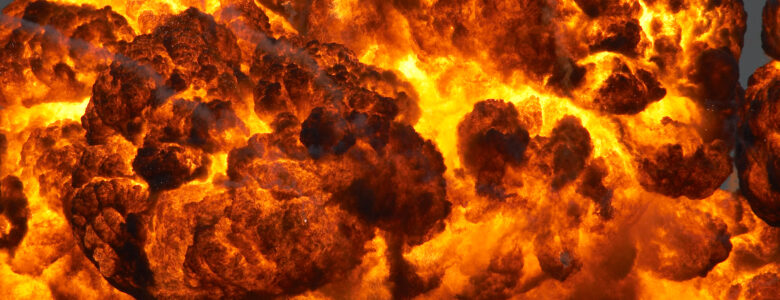Spontaneous combustion is a fascinating yet potentially devastating phenomenon. It refers to the ignition of organic matter caused by an internal source, without any external flame or spark. From an insurance perspective, understanding spontaneous combustion is crucial for both policyholders and insurers, especially in industries dealing with materials prone to this risk.
What is Spontaneous Combustion?
Spontaneous combustion occurs when a material heats up due to internal chemical reactions, eventually reaching a temperature high enough to ignite. Common examples include oily rags, hay, coal, and certain agricultural products. This type of combustion can lead to significant property damage, making it a critical consideration for insurance policies.
Insurance Coverage for Spontaneous Combustion
In the realm of insurance, spontaneous combustion is often addressed through specific clauses in fire and property policies. These clauses provide compensation to policyholders in the event of damage caused by spontaneous combustion .
Spontaneous Combustion Can Happen to Anyone
Spontaneous combustion can happen to anyone—from homeowners storing cleaning supplies or laundry in poorly ventilated areas, to farmers handling hay or compost, to industrial workers dealing with chemicals, oils, or coal. Even artists, mechanics, or restaurant owners who use or dispose of flammable materials like linseed oil, paint thinners, or cooking oils are at risk. Awareness and proper storage practices are essential for preventing these potentially dangerous incidents.
How to Prevent Spontaneous Combustion
Preventing spontaneous combustion starts with proper storage and handling of materials prone to self-heating. Always store oily rags, especially those soaked in linseed oil or other organic oils, in metal containers with tight-fitting lids, and dispose of them according to local hazardous waste guidelines. Keep combustible materials like hay, compost, or coal in well-ventilated areas to allow heat to dissipate. Avoid piling these materials too densely, as trapped heat can accelerate internal reactions. Regularly clean workspaces, especially in garages, workshops, and kitchens, to prevent buildup of flammable residues. Monitoring temperature and humidity in storage areas and using fire-resistant containers can also reduce risk. Awareness, routine maintenance, and safe disposal practices are key to preventing spontaneous combustion incidents.
Why is Spontaneous Combustion Coverage Important?
Industries such as restaurants, laundromats, and contractors often handle materials susceptible to spontaneous combustion. For instance, restaurants using cooking oils can experience fires due to the spontaneous combustion of greasy rags. Laundromats face similar risks with laundry contaminated by oils and grease, which can ignite during or after the drying process. Contractors, especially those dealing with painting and wood treatments, must be cautious of oily rags and other materials that can catch fire due to internal heating.
Without proper insurance coverage, businesses may face substantial financial losses from such incidents. Therefore, incorporating spontaneous combustion clauses into insurance policies can mitigate these risks and provide peace of mind.
Case Studies and Legal Considerations
Several notable cases highlight the importance of understanding spontaneous combustion from both technical and legal perspectives. For example, the fire at One Meridian Plaza in Philadelphia was caused by the spontaneous combustion of oily rags . Legal claims often arise from such incidents, focusing on product liability and defective warnings or instructions. Insurers and policyholders must navigate these complexities to ensure proper coverage and liability management.
Spontaneous combustion is a unique risk that requires specialized attention in the insurance industry. By understanding its causes and implications, policyholders can better protect their assets and insurers can offer tailored coverage options. Whether you’re in the restaurant, laundromat, or contracting business, considering spontaneous combustion in your insurance policy is a prudent step towards comprehensive risk management.
Want more information specific to your industry?
Check out the following resources that explain how to prevent spontaneous combustion in your industry:
Builders Risk – Spontaneous Combustion Prevention on the Jobsite
Combustible Dust – Toolbox Talk
Electrical Preventative Maintenance
Federal Pacific Stab Lok Panels
Flammables – Class 1 Locations – Toolbox Talk
Hazard Alert: Spontaneous Combustion
Jobsite Loss Prevention Checklist
Pellet Stoves and Wood Boilers
Propane Dispensing – Toolbox Talk
Spontaneous Combustion on the Jobsite
The Hidden Danger of Oily Rags
Vehicle Storage and Garage Fires
Welding and Hot Work – Fire Prevention – Toolbox Talk
Wood Chip Piles- Fire Prevention Fact Sheet
There for You: Acadia Insurance
At Acadia, we’re all about helping businesses throughout the Northeast thrive. Our mission is to provide superior service and products as close to you as possible, providing you with the coverage you need to proceed with confidence.
We understand what you want most from your insurance is security and peace of mind. That means knowing you are working with an insurance provider who will support you every step of the way to help you protect your business.
With Acadia, not only can you get coverage tailored to your needs, but you will also receive support from dedicated claims professionals to guide you through the claim process in the event of a loss. That way, you know exactly what to expect. Knowing your claims professional by name and a handshake – that’s “Closer Coverage”. Get to know more about how we work and find an agent near you by going to the Find an Agent section on our public website (www.acadiainsurance.com).
Acadia is pleased to share this material for the benefit of its customers. Please note, however, that nothing herein should be construed as either legal advice or the provision of professional consulting services. This material is for informational purposes only, and while reasonable care has been utilized in compiling this information, no warranty or representation is made as to accuracy or completeness. Recipients of this material must utilize their own judgment in implementing sound risk management practices and procedures.




